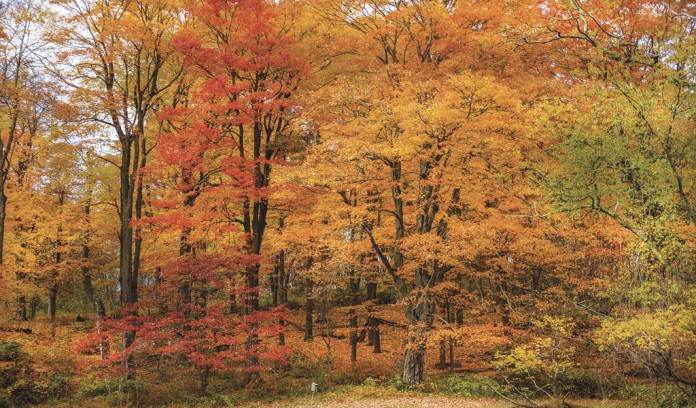UNIVERSITY PARK, Pa. — Drought conditions in parts of Pennsylvania, particularly in the north central region, are likely to dampen the fall foliage display, according to a forest ecologist in Penn State’s College of Agricultural Sciences.
Drought
On Sept. 6, the state Department of Environmental Protection added four more counties to its very dry list, bringing the number of counties under drought watch to 38. In those areas, foliage color may turn earlier and be less brilliant than usual, warned Marc Abrams, professor of forest ecology and physiology.
“I believe the summer drought in central, northern and eastern Pennsylvania has been severe enough to cause a slight to moderate decline in the quality of fall colors this year due to a decline in physiological activity during that time,” he said. “This also applies to areas of New England and the northern Great Lakes states.”
Some parts of the state experienced a series of rainstorms in mid-August that may have alleviated the situation somewhat for trees and crops, although many counties are experiencing rainfall deficits in excess of 6 inches for the year.
“Because of those showers, most trees are going into the fall season in fairly good physiological condition,” Abrams said. “What we need, however, is for cool to cold temperatures to arrive by early to mid-October to bring out the best colors that are possible this year. If it stays warm and we have wet conditions through the middle of October, that would be another negative for fall colors.”
For three decades, Abrams has studied how seasonal precipitation and temperature influence timing and intensity of fall colors in central Pennsylvania.
“We believe that clear, bright days, low but not freezing temperatures, and dry but not drought conditions promote the best fall colors,” he said.
Temperature
Cooler temperatures signal deciduous trees to stop producing chlorophyll, the green pigment responsible for photosynthesis, he explained. The chlorophyll breaks down and disappears, unmasking other leaf pigments. It’s these other pigments — called xanthophylls and carotenes — that create the yellows and oranges seen in the leaves of yellow poplar, hickory, sycamore, honey locust, birch, beech and certain maples.
After chlorophyll production stops, trees also produce another pigment in their leaves called santhocyanin, according to Abrams. The anthocyanins create the brilliant reds and purples seen in maple, sassafras, sumac, black gum and purple oak. The amount of anthocyanin produced each year is related to starch levels in the tree. Trees often produce less starch during droughts, such as the one the state is experiencing.
“One thing that I have been impressed with in my 20 years of gauging foliage is the resiliency of the display,” Abrams said. “Year after year, despite the conditions, there are places where the trees show good color, but perhaps not great color.
“People should go out and search for those pockets of bright color, because they will be there. They just may be a little harder to find this year than usual.”











